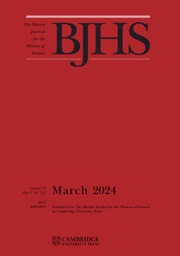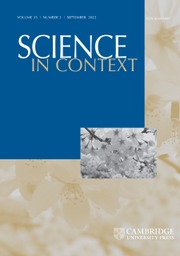Victims of Fashion
Part of Science in History
- Author: Helen Louise Cowie, University of York
- Date Published: November 2021
- availability: Available
- format: Hardback
- isbn: 9781108495172
Hardback
Other available formats:
eBook
Looking for an inspection copy?
Please email [email protected] to enquire about an inspection copy of this book
-
Animal products were used extensively in nineteenth-century Britain. A middle-class Victorian woman might wear a dress made of alpaca wool, drape herself in a sealskin jacket, brush her hair with a tortoiseshell comb, and sport feathers in her hat. She might entertain her friends by playing a piano with ivory keys or own a parrot or monkey as a living fashion accessory. In this innovative study, Helen Cowie examines the role of these animal-based commodities in Britain in the long nineteenth century and traces their rise and fall in popularity in response to changing tastes, availability, and ethical concerns. Focusing on six popular animal products – feathers, sealskin, ivory, alpaca wool, perfumes, and exotic pets – she considers how animal commodities were sourced and processed, how they were marketed and how they were consumed. She also assesses the ecological impact of nineteenth-century fashion.
Read more- Offers new insights into the ethics of consuming animal products in Victorian Britain
- Explores the ecological impact of the commodification of animals and the measures taken to mitigate it
- Global in scope, covering animal commodities from multiple continents
Reviews & endorsements
'From civets horribly confined to produce perfume scent to elephants killed for ivory billiard balls and piano keys, Cowie demonstrates how fashion “valued” animals, even while letters to the RSPCA illustrated concern for animal agency and welfare. Contemporary debates surrounding nonhuman animals' victimization are rooted in the human animal's propensity to display.' Abel Alves, Ball State University
See more reviews'This remarkably powerful and elegantly crafted book explores the appeal of animal-based products in Victorian and Edwardian Britain. Taking us deep into the world of trading and consuming bird feathers, seal skins, ivory, and exotic pets, Victims of Fashion brims with historical insight about the consumption of these goods, but also, importantly, their decline in popularity.' Neil Pemberton, University of Manchester
'This is a fascinating book from start to finish, written with great verve and clarity. From animal acclimatisation schemes to exotic pet keeping, and from campaigns against animal cruelty and 'murderous millinery' to the beginnings of international wildlife conservation action, or the hunt to find synthetic substitutes for animal products, it sets some of the key questions of our time in a vivid historical context.' Sally Shuttleworth, University of Oxford
'This terrific book exposes how far elites were implicated in systemised animal cruelty (historically associated with the working classes) and illustrates that while women often were pioneering advocates of animal rights, they also constituted core markets for animal commodities.' Julie-Marie Strange, Durham University
'Victims of Fashion is a terrific addition to a number of fields, including environmental history, history of technology, commodity studies, and histories of consumer culture. It uses a wide variety of archival sources to address a fascinating and interdisciplinary topic, and the individual chapters would also make excellent, concise reading assignments for students … I would highly recommend this book for scholars in history of science, environmental history, histories of consumption and dress, and any one interested in questions of sustainability in a global context.' Sarah Pickman, H-Environment
'I would highly recommend this book for scholars in history of science, environmental history, histories of consumption and dress, and anyone interested in questions of sustainability in a global context.' Sarah Pickman, H-Environment
'Featuring excellent and varied illustrations, by tracing the global impact of the trade in animal commodities in nineteenth-century Britain this highly informative book makes an important contribution to expanding awareness of the victims of empire.' Pandora Syperek, Archives of Natural History
'[A] rich and impressive book, a much-needed account of the development of the global entanglement of humans and non-human animals in modern times, with vital relevance to our own age and to our own lives.' Philip Howell, Journal of Modern History
Customer reviews
Not yet reviewed
Be the first to review
Review was not posted due to profanity
×Product details
- Date Published: November 2021
- format: Hardback
- isbn: 9781108495172
- length: 300 pages
- dimensions: 235 x 157 x 20 mm
- weight: 0.56kg
- availability: Available
Table of Contents
Introduction
1. Murderous millinery
2. The seal and his jacket
3. Is the elephant following the dodo?
4. Silk of the Andes
5. Bitter perfumes
6. Monkey business
Conclusion
Epilogue.
Sorry, this resource is locked
Please register or sign in to request access. If you are having problems accessing these resources please email [email protected]
Register Sign in» Proceed
You are now leaving the Cambridge University Press website. Your eBook purchase and download will be completed by our partner www.ebooks.com. Please see the permission section of the www.ebooks.com catalogue page for details of the print & copy limits on our eBooks.
Continue ×Are you sure you want to delete your account?
This cannot be undone.
Thank you for your feedback which will help us improve our service.
If you requested a response, we will make sure to get back to you shortly.
×




